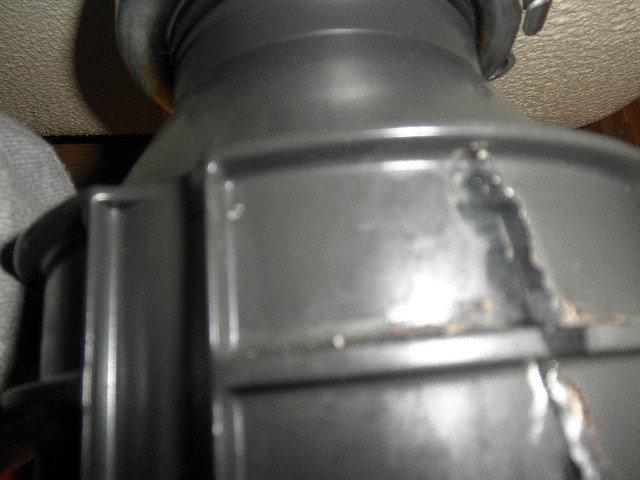This post following next in relation to Garbage Disposal Leaking From Bottom is really engaging. You should read it.

Garbage disposals are crucial cooking area home appliances that help in dealing with food waste successfully. However, a leaking garbage disposal can be an aggravating and messy problem to take care of. Thankfully, many leaks can be repaired conveniently with a few easy actions. In this article, we will go over exactly how to deal with a leaking waste disposal unit effectively.
Introduction
Garbage disposals are installed under cooking area sinks and are designed to shred food waste right into smaller sized pieces, enabling it to travel through the plumbing system easily. While these gadgets are generally trusted, leaks can happen in time because of damage, loose connections, or damage to the system.
Step-by-Step Overview to Dealing With a Leaking Garbage Disposal
Switch off the Power
Before attempting any type of repair work, make sure that the power to the waste disposal unit device is switched off to avoid the threat of electric shock.
Situate the Leakage
Recognize the exact place of the leak and determine the reason
Tighten up Links
Make use of a wrench to tighten any kind of loosened connections between the disposal unit and the pipes system.
Change Seals or Gaskets
If the leak is because of used seals or gaskets, eliminate the old parts and change them with brand-new ones.
Patching Splits or Openings
For splits or openings in the disposal unit, use epoxy or a suitable patching material to seal the broken location.
Recognizing the Resource of the Leakage
Prior to attempting to take care of a leaking waste disposal unit, it is vital to recognize the resource of the leakage. This can normally be done with aesthetic evaluation or by conducting simple examinations.
Visual Evaluation
Inspect the waste disposal unit unit very carefully for any signs of water leak. Pay attention to locations around seals, gaskets, and connection factors.
Testing for Leaks
One method to test for leakages is by running water with the disposal unit and looking for any type of noticeable indications of leakage.
Typical Reasons For Leakages in Trash Disposals
Worn Seals and Gaskets
Seals and gaskets play an essential duty in avoiding water from dripping out of the garbage disposal. Gradually, these components can weaken, bring about leakages around the disposal unit.
Loose Connections
The connections in between the waste disposal unit and the plumbing system can become loosened with time, causing water to leak out throughout procedure.
Splits or Openings in the Disposal Device
Physical damages to the garbage disposal, such as splits or openings in the housing, can also cause leaks.
Devices and Materials Needed for Taking Care Of a Dripping Garbage Disposal
Before starting the repair process, collect the necessary tools and products, consisting of a screwdriver, flexible wrench, plumbing's putty, substitute seals or gaskets, and epoxy or patching product for repairing fractures or holes.
Evaluating the Waste Disposal Unit After Fixing
When the repair work is full, examine the waste disposal unit by running water via it to make certain that the leakage has actually been fixed.
Preventive Maintenance Tips to Avoid Future Leaks
To stop future leakages, it is necessary to perform normal maintenance on your garbage disposal. This consists of maintaining it tidy, staying clear of putting non-food items or difficult objects down the disposal, and occasionally checking for leaks or various other problems.
Verdict
Finally, taking care of a dripping garbage disposal is a reasonably straightforward process that can be completed with fundamental devices and materials. By complying with the actions detailed in this write-up and exercising preventive upkeep, you can maintain your garbage disposal in good working problem and avoid costly repair work in the future.
HERE’S HOW TO FIX YOUR GARBAGE DISPOSAL
WHAT TO DO IF SOMETHING IS STUCK IN YOUR GARBAGE DISPOSAL
If the impeller won’t turn, there’s probably something stuck in the disposal. It could be a steak bone or peach pit, although plumbers report pulling all sorts of inappropriate objects out of disposals, such as bottle caps or aluminum foil. Make sure power to the disposal is off, and look inside to see if you can see the source of the jam.
Never stick your fingers in a disposal. Pull out anything you see with tongs or pliers.
If the disposal still won’t work, it may be time to call a plumber or consider buying a new disposal. GEM Plumbing & Heating is here for all of your garbage disposal needs.
WHAT TO DO IF YOUR GARBAGE DISPOSAL DRAIN IS CLOGGED
Take everything out from underneath your sink and put a bucket or other container under your disposal to catch any water that drains out. Disconnect your disposal from the power supply. If it’s plugged into a wall outlet, unplug it. If it’s hardwired into an electrical box, go to the electrical panel and turn off the breaker for the disposal. Pour ¼ cup of baking soda into the drain, followed by ½ cup of white vinegar. Give the solution a few minutes to fizz and do its work. Look into the disposal with a flashlight to see if you can see an object that might be causing the clog. If you see it, remove it using tongs or pliers. MORE TIPS ON DEALING WITH A CLOGGED GARBAGE DISPOSAL
Never use drain cleaner in a garbage disposal. It can damage the plastic parts inside the disposal. You can also be splashed with the caustic liquid while working to clear the clog. Beware! Never stick your fingers into a garbage disposal. Trust us — not a good idea. In many instances, your dishwasher drains through your garbage disposal. This allows the disposal to grind any large food particles that may be drained out of your dishwasher. There are some jurisdictions, however, where the plumbing code prohibits such a connection. WHAT TO DO WHEN YOUR DISHWASHER DRAINS THROUGH THE DISPOSAL
Run some water in the sink so your plunger has at least a ½-inch of water to create a seal and plunge vigorously up and down several times. You may need to repeat this several times. Run hot water down the drain to clear any residue that remains.

Do you appreciate reading up on Why Is ? Try leaving a remark down below. We will be glad to know your insights about this blog entry. We hope that you visit us again soon. Loved our article? Please share it. Let other people check it out. Kudos for your time. Kindly come by our website back soon.
Call Today